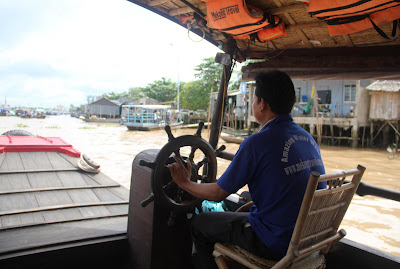It is available in many hawker stalls and I tried this in Junction 8 and Funan Food Court, although it was cooked in a different style by different stalls but still it offer a good and healthy benefits to your body.
I tried to cooked my own version last Sunday(9th October) for our lunch according on how I tasted it. I sauteed garlic, onion and ginger until it turns brown, 500ml of Heinz chicken broth was added and allowed it to simmer for five minutes. Then I add fried fish(not battered), by the way I used greasy grouper unlike the fish which I know is dalag( in Tagalog) which the stalls normally used, vegetable and milk then simmer again for 2-3 minutes. Serve it hot with sprinkle of fried shallots.
I had my lunch without my sister, so I don't know her verdict, but sometimes it's nice to experiment and cook the food you crave for and cook the way you want and tasted it.
To my lunch buddies: Mare, Melanie, Kaye, Niezha, Gieselle, Mike and Merick: Eat here? With milk , rice or noodles?




































































